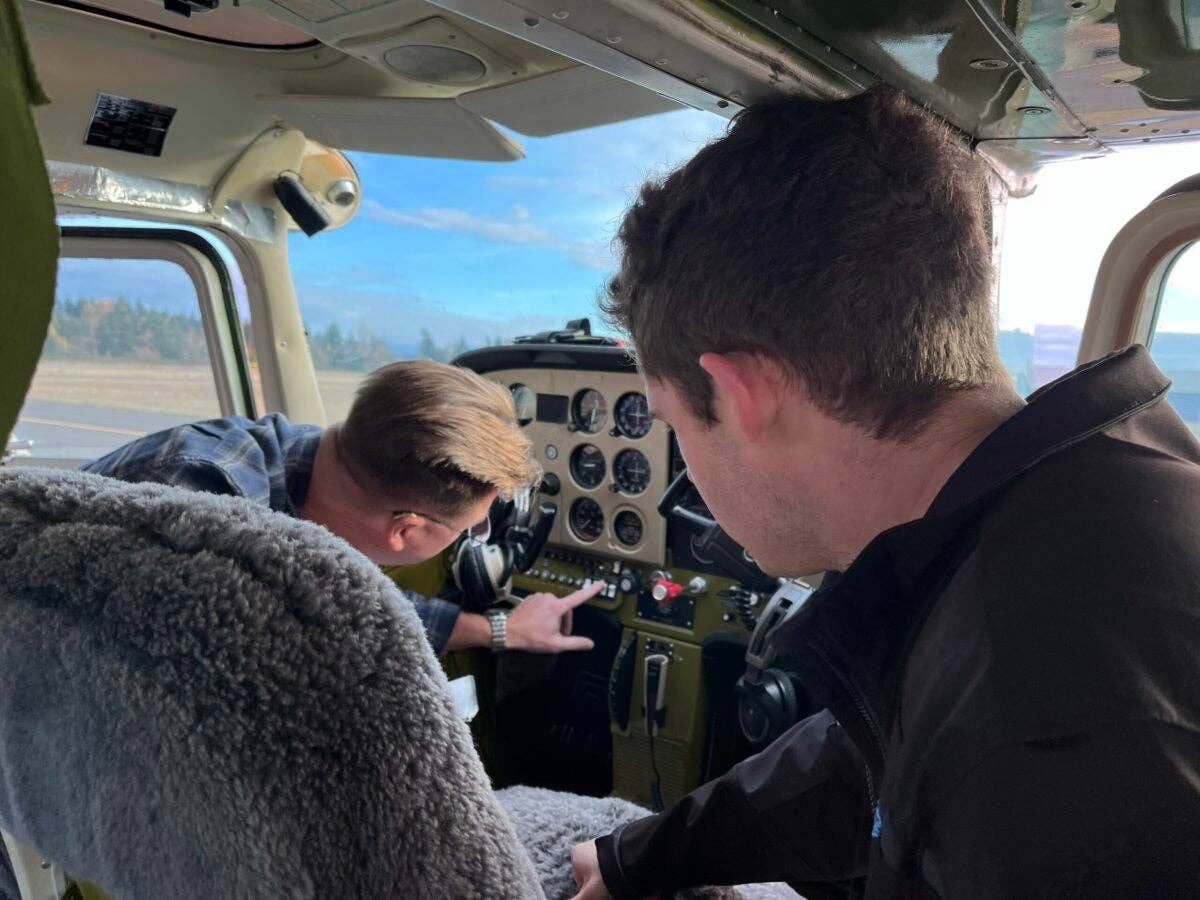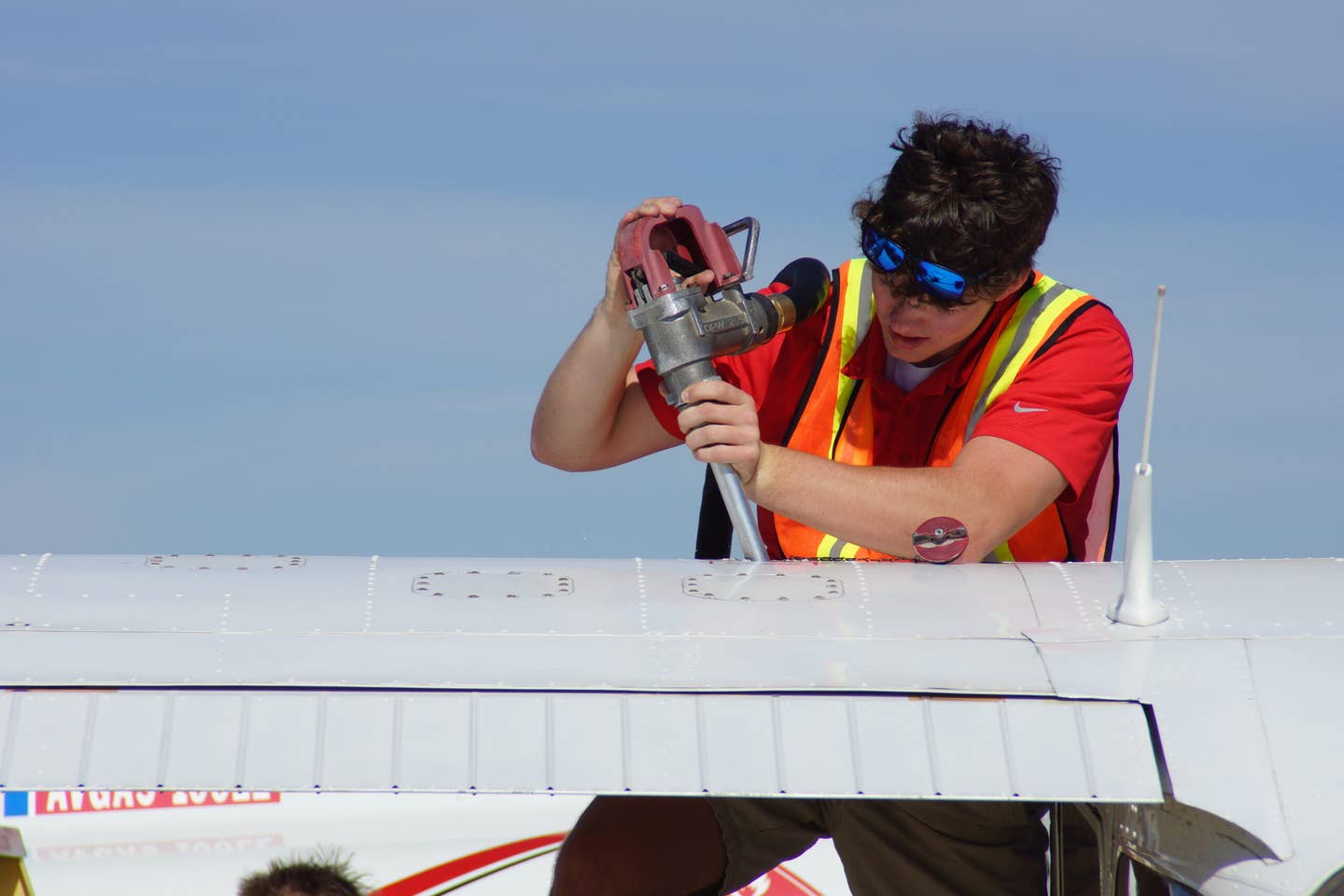The Art of Ground School
Whether you are a flight instructor or a learner, here’s why you should make ground school a priority.

[Courtesy: Flight Safety International]
One of the hard truths of being a flight instructor is that you are going to lose learners.
They will drop out of flight training when they run out of money or when life gets in the way. It can also happen with ground school—they miss a class here or there or don’t have time to study. More often than not, it is more of a slow goodbye when they become overwhelmed.
It is a learning plateau of sorts, and a good CFI will be watching for this and be ready to reel the learner back in.
Instructor Attitude Sets the Tone
It starts with attitude. If the instructor doesn’t want to be there, neither will the learners.
To the CFIs: Ground school shouldn't be treated like a chore or a necessary evil.
To the learners: Yes, it will help you pass the knowledge test, but it is also there to prepare you for your time in the air. Put some effort into it, and with the help of your instructor, do flight lessons that help you better understand the concepts you learn about in class.
To the flight schools: Find a CFI who excels at and enjoys teaching ground school. Nothing turns off a learner quicker than a lazy CFI who reads slides off a screen or passages out of a book and tries to call that teaching. They need to be engaged in the delivery—and that needs to be memorable for learning to take place.
Some flight schools pay their CFIs to create and teach a 10-week course with the caveat that the participants who miss a class can drop in on that particular class in the next 10-week course for free. Give the participants a six-month window to do these makeup classes.
This works best when the ground schools are run several times a year, provided they have enough learners to make it economically feasible for the flight school. I have taught classes with as few as five and as many as 12 learners.
The pace of the class should be to accommodate the slowest learner. It will take the CFI about two weeks to determine who that is.
To the CFI: Be ready to give that person extra assistance (privately) if needed, as there are fewer worse feelings than being left behind academically. Understand that talking is not teaching any more than throwing food at someone is getting them to eat.
Ask questions of the learners to see if the message delivered is the one received. If it isn't, be ready to rephrase
Train the trainers
It can be beneficial for CFI candidates to shadow the lead CFI, and open this opportunity to the inexperienced CFIs or even a commercial soon-to-be CFI candidate.
The CFI who is leading the course assigns the student-teacher a topic—for example, weight and balance or hazardous weather. The leading CFI is still in charge and will oversee the lesson to make sure all the elements are addressed, but it is a great opportunity for an up-and-comer to gain teaching experience.
Take the Initiative to Teach Ground
If your flight school does not have an established face-to-face ground school class, perhaps you can take the initiative and create one?
You don't have to hold a CFI certificate to do this. You can become a ground instructor by passing the advanced ground instructor (AGI) knowledge test.
There is a basic ground instructor certificate, but if you want to pursue Gold Seal certification (the FAA's way of saying you know your stuff), you will need to have an AGI, so why not get it now? The material on these tests is similar to that required of the private pilot and commercial pilot candidates. Once you pass the AGI exam, you can begin teaching ground school.
This nugget of knowledge comes from Greg Brown's The Savvy Flight Instructor. Brown was flight instructor of the year in 2000 and inducted into the Flight Instructor Hall of Fame in 2021.
Brown became my mentor after I heard him speak at a convention. His book is required reading for all the CFI candidates I work with, because it provides guidance on how to achieve professionalism and to market and prepare yourself to be an aviation educator. If you are on the instructor track, read this book.
Initiative: Master Level
When you don't have a CFI certificate or experience as a teacher, it can be difficult to find a location that will hire you as a ground instructor. Don't let that stop you.
Have some business cards made and market yourself as a tutor for those in pursuit of their flight review. The ground portion can often be very daunting if it has been a few years since they were involved in aviation.
This is how I started my instructor career. I began tutoring a friend in a Starbucks on Saturday mornings. I carried a small whiteboard, a sectional, an E6-B, etc. Another customer who recognized the tools of the trade asked if I would tutor him for his flight review.
This continued, and soon I had a small ground school going in the corner on Saturday mornings. I would tip the baristas in advance, and everyone would order coffee for the two hours we were together. It helped pay for my CFI flying lessons and develop my teaching skills.

Subscribe to Our Newsletter
Get the latest FLYING stories delivered directly to your inbox






